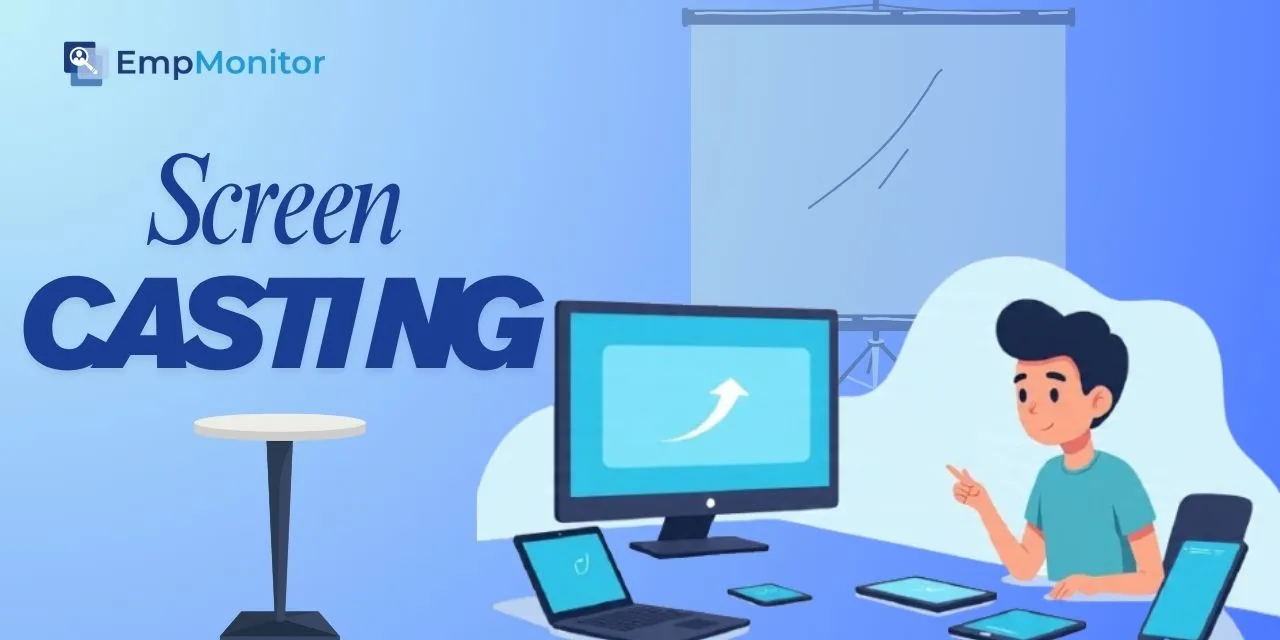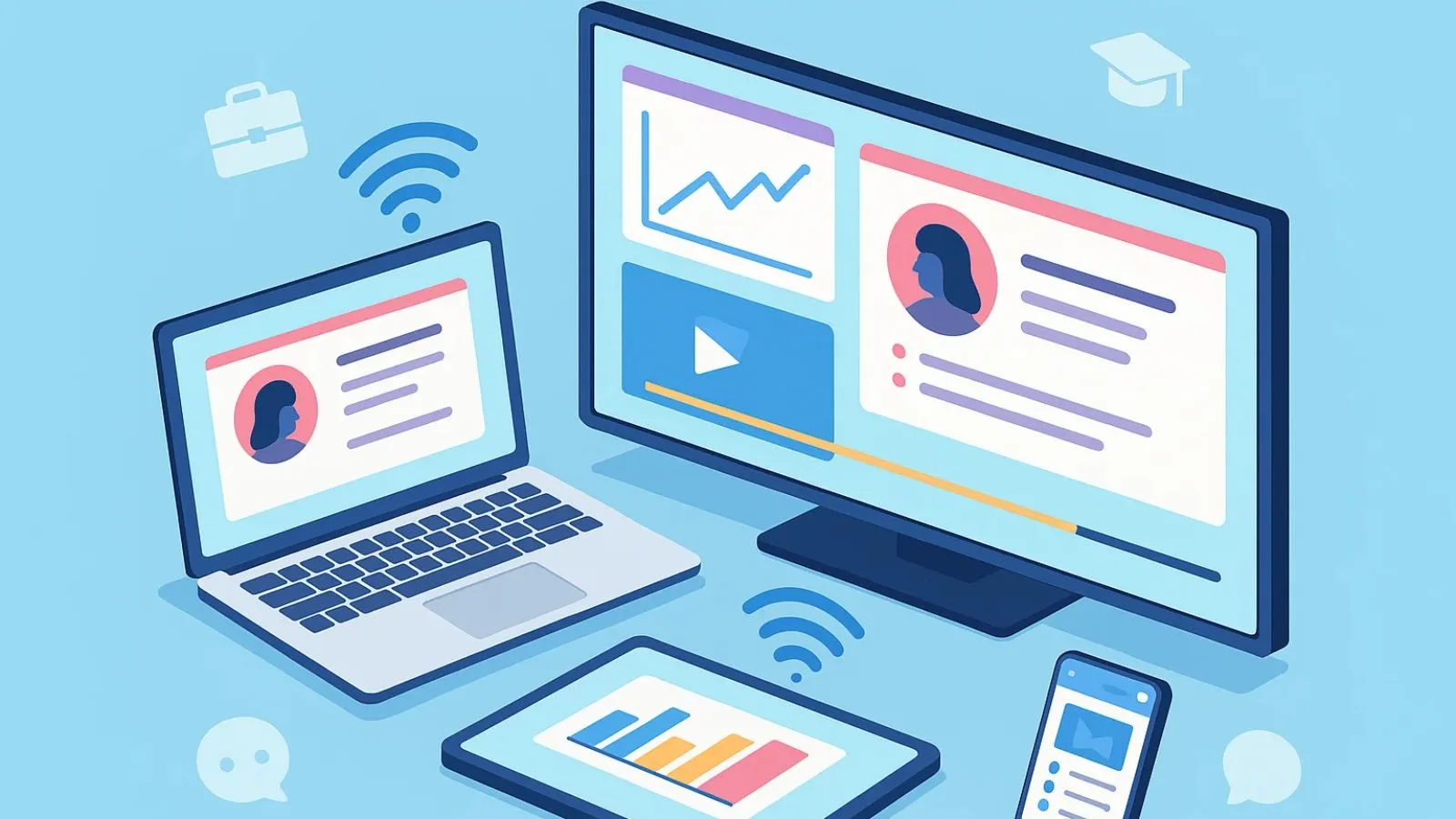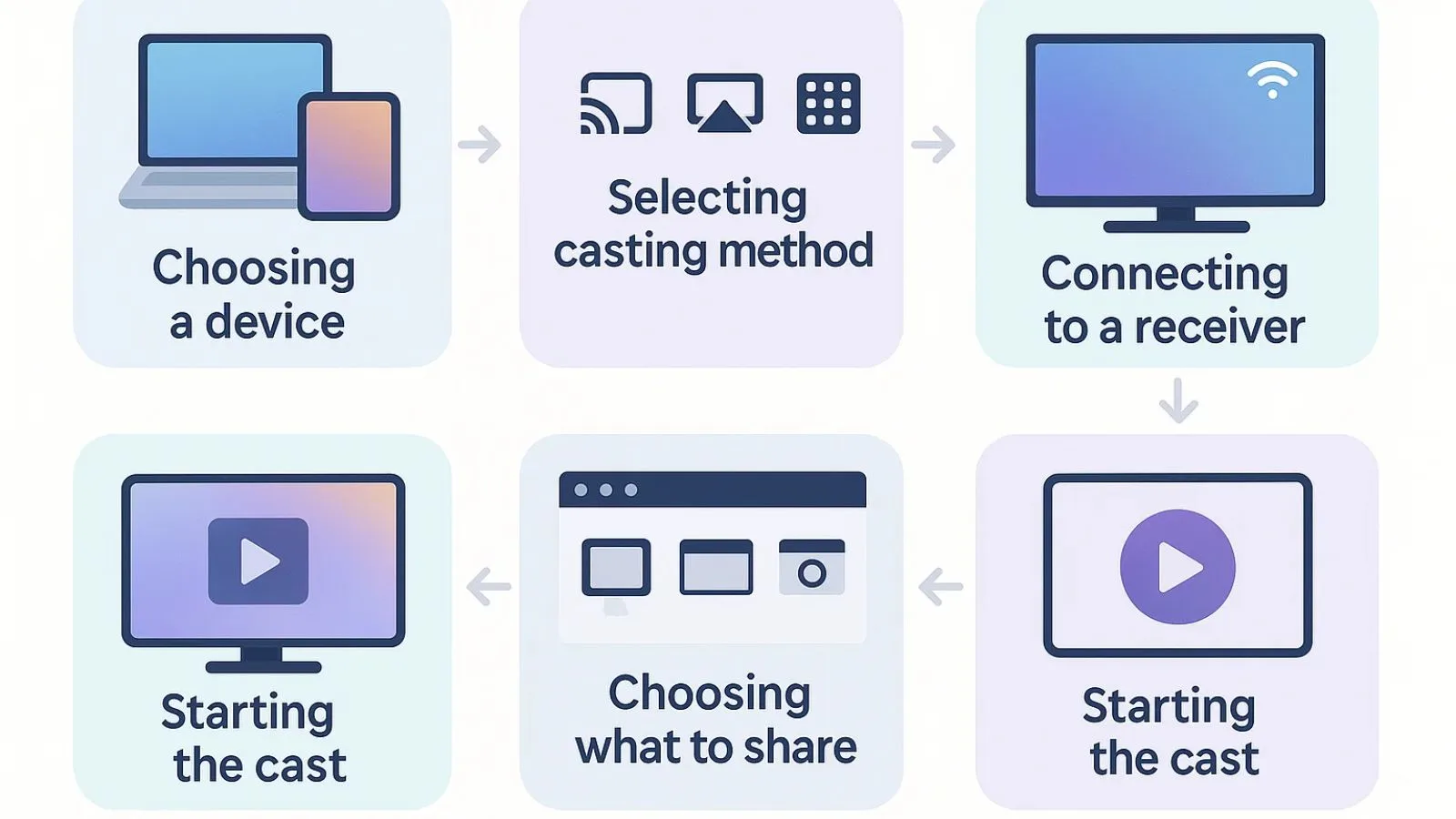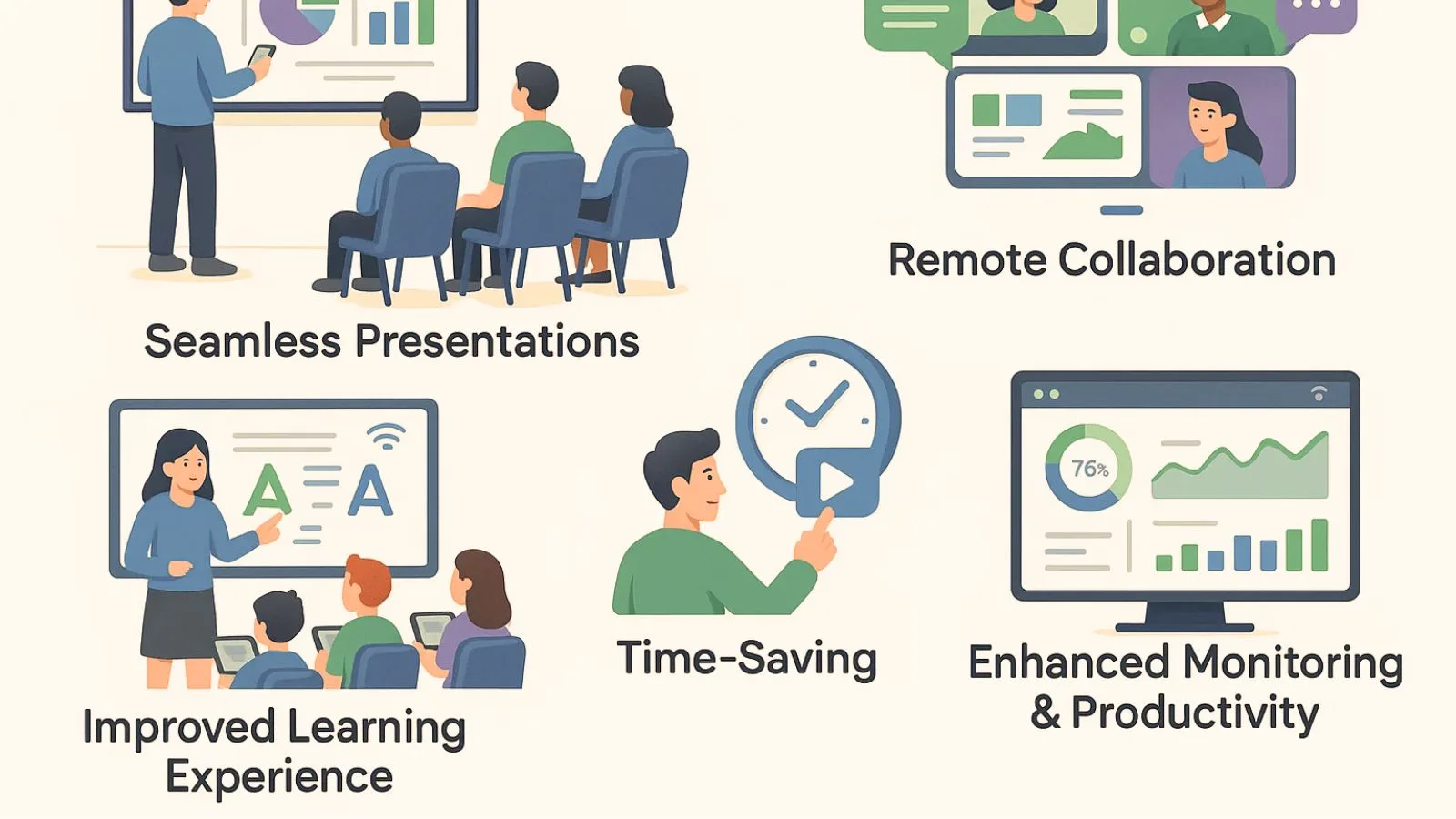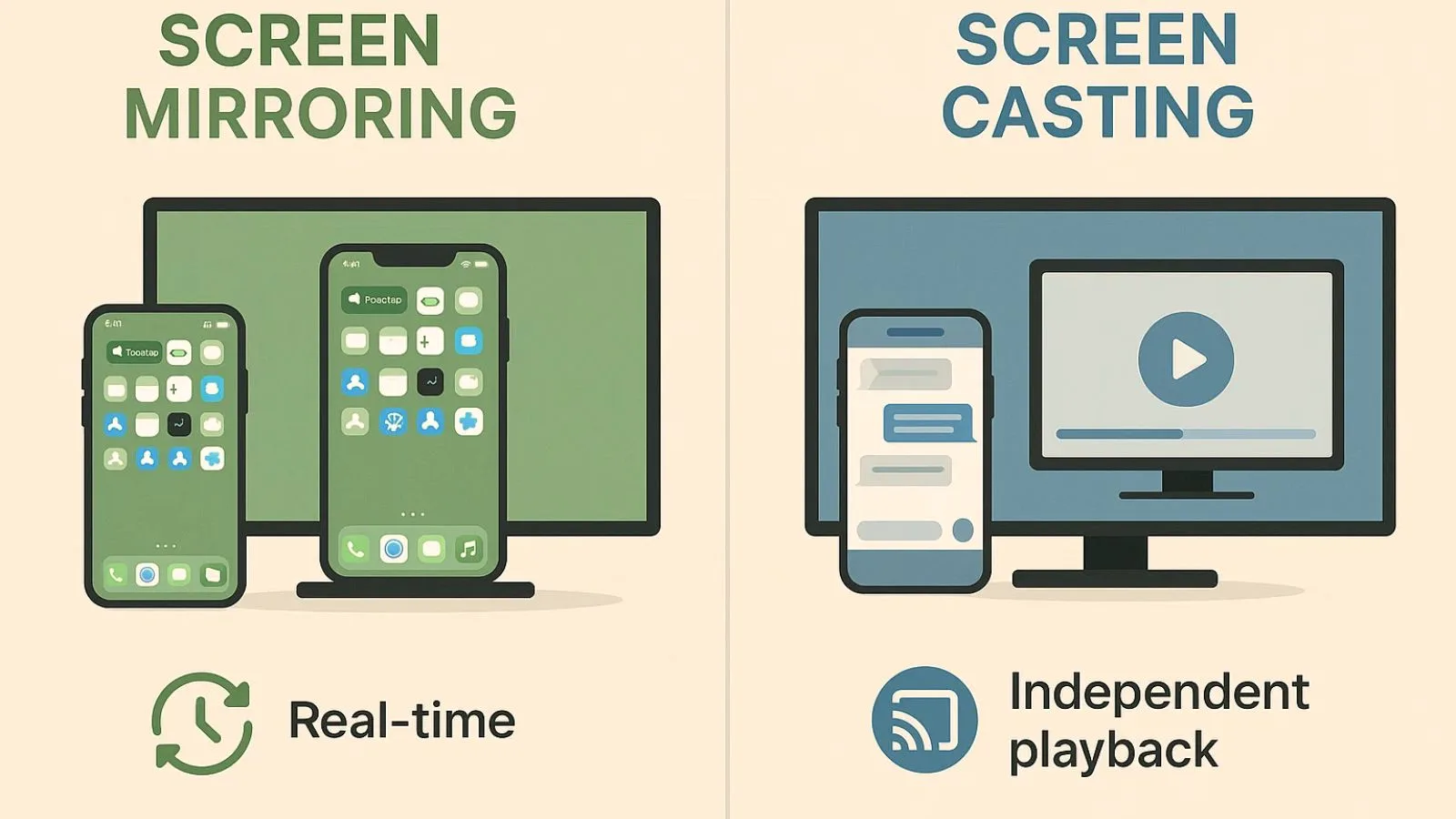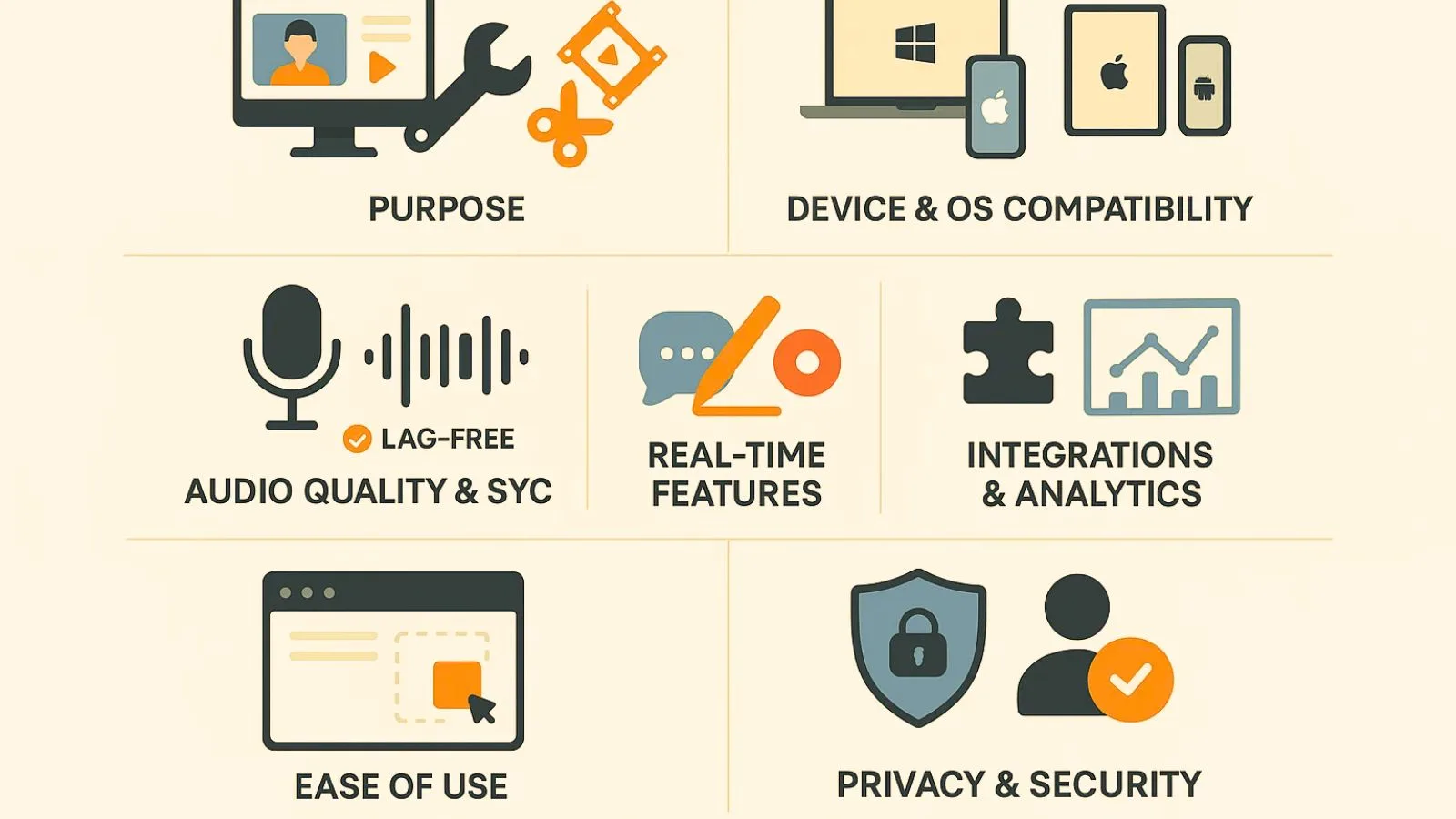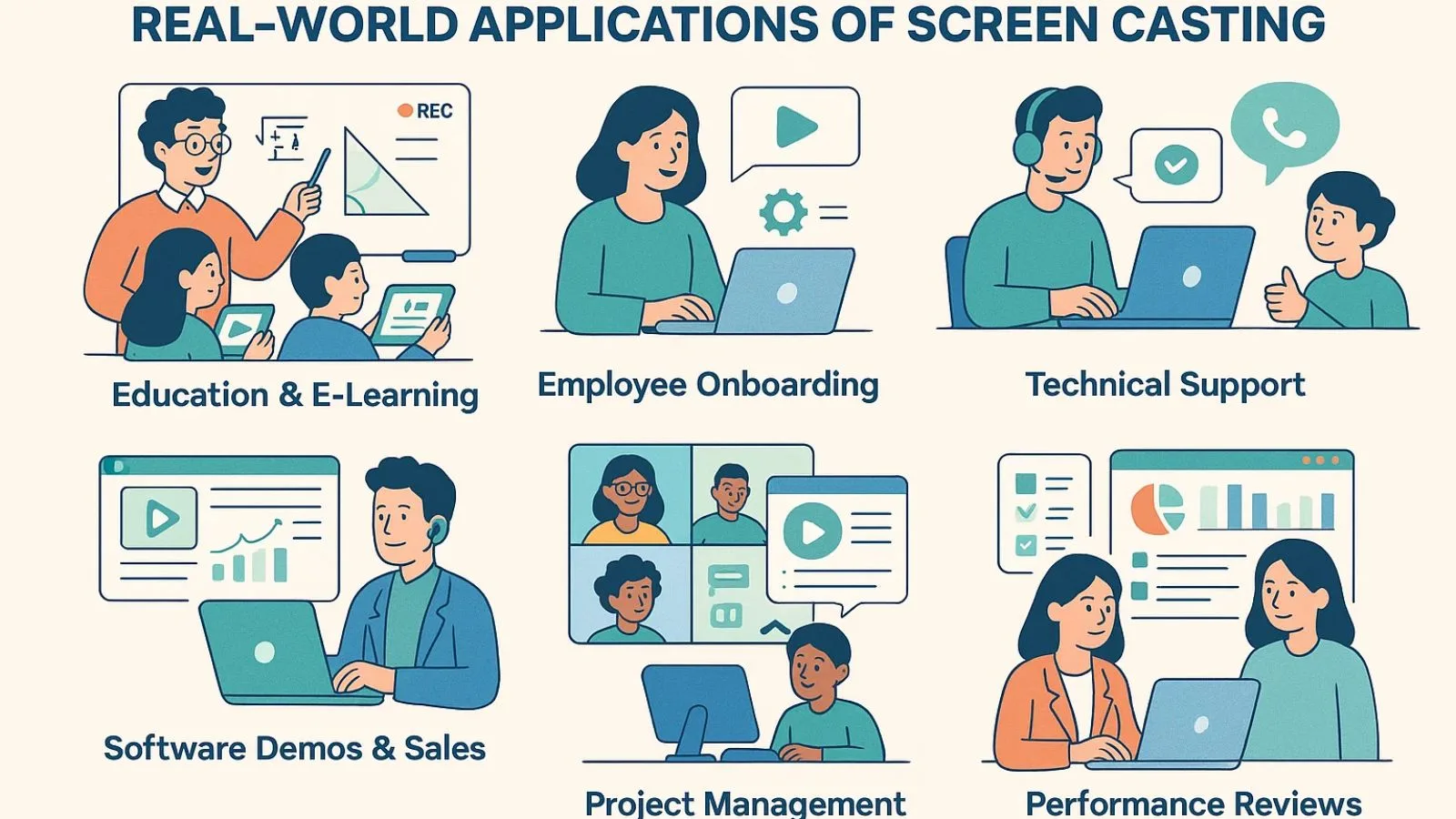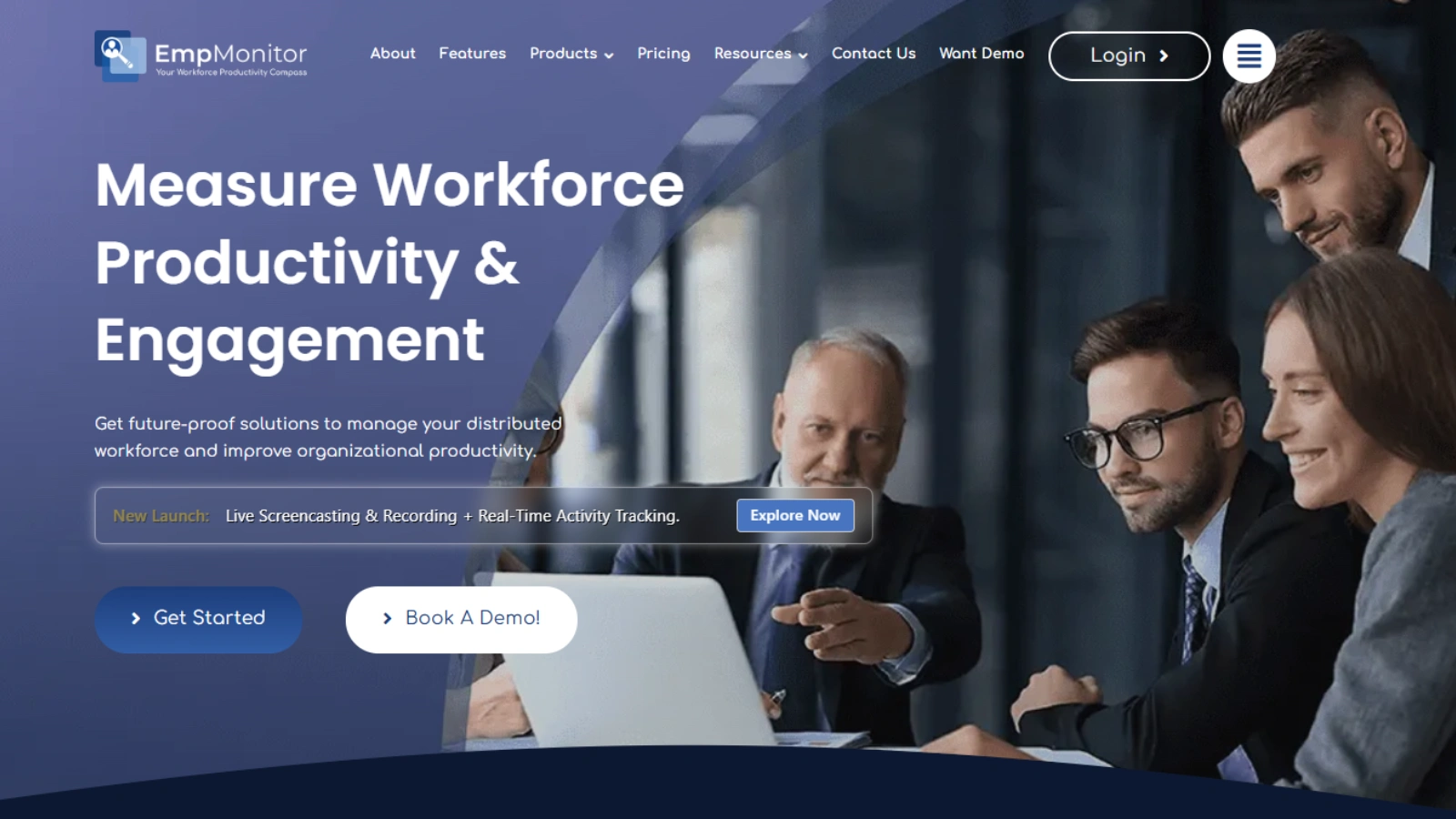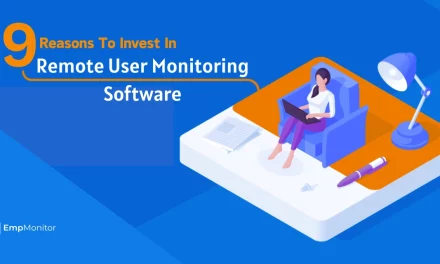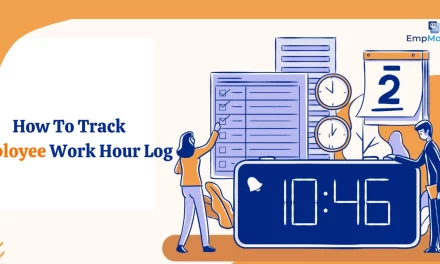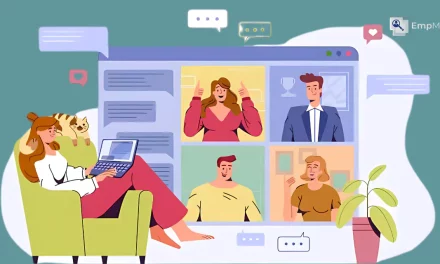Have you ever wanted to show someone exactly what’s happening on your screen without needing to explain every step? That’s exactly what screen casting helps you do. It’s like recording your screen in real-time so others can watch what you’re doing as if they’re sitting right beside you.
From remote work presentations to online classes and even product tutorials, screen casting has become a go-to tool for clear and efficient communication. As our digital lives become more collaborative, mastering screen casting can save time, improve workflows, and create better learning or working experiences.
In this blog, we’ll dive into everything you need to know about screen casting, how it works, where it’s used, why it’s powerful, and how you can get the most out of it using tools like Empmonitor. Whether you’re a business owner, a teacher, or just someone who wants to share what’s on your screen, this guide will help you screen cast smarter and more effectively.
You can Listen our Podcast here,
What is Screen Casting?
Screen casting is the process of wirelessly sharing or recording what’s on your screen, be it your computer, tablet, or smartphone, and displaying it on another screen or saving it for later viewing. It allows you to capture live activity, including audio, to present tutorials, product demos, or lessons without needing face-to-face interaction.
Unlike Live screen mirroring, which simply replicates your screen in real-time on another device, screen casting allows you to stream or record content independently. That means you can control how and when your viewers engage with it.
It’s a handy tool across industries, whether it’s screen casting for business to demonstrate software or screen casting for education to create explainer videos. The goal is to enhance communication, improve understanding, and deliver content in a visual, clear, and accessible way.
How to Use Screen Casting (Step-by-Step)?
Getting started with screen casting is easier than you might think. Whether you’re using it for remote meetings, online classes, or product demos, here’s a simple step-by-step guide:
- Choose Your Device
You can cast from a laptop, desktop, tablet, or even your smartphone. - Pick a Casting Method
You can utilize built-in options like Chromecast or AirPlay, or third-party apps, depending on your device and specific needs. And if you’re looking to monitor usage and activity alongside casting, tools like EmpMonitor can give you that extra layer of control and insights. - Connect to a Receiver
Ensure both your device and receiver (TV, projector, or smart display) are on the same Wi-Fi network. Most screen casting platforms will auto-detect available receivers. - Select What to Share
You can cast your entire screen, a single window, or just a browser tab, perfect for staying in control of what your audience sees. - Start Casting
Once connected, hit the “Cast” or “Start” button, and your screen will begin to display on the selected device. Some tools allow you to record the session, too. - Stop When Done
Simply click “Stop Casting” to end your session. Always double-check that your screen is no longer broadcasting to avoid sharing anything unintentionally.
Benefits of Screen Casting
benefits of Screen mirroring isn’t just a neat tech trick; it’s a powerful tool that brings real advantages to your workflow. Here are some of the biggest benefits:
1. Seamless Presentations
Instead of fumbling with file transfers or cords, you can instantly display your screen to any compatible device. Perfect for meetings, pitches, or team huddles.
2. Remote Collaboration
It makes virtual meetings more interactive. You can walk your team through a project, review files in real-time, or even provide tech support without switching apps.
3. Improved Learning Experience
Educators use screen casting for education to demonstrate software, share videos, or annotate documents in real time. This keeps students engaged, especially in remote or hybrid classrooms.
4. Time-Saving
Rather than explaining something step-by-step, you can just show it. This visual shortcut reduces confusion and cuts down unnecessary back-and-forth.
5. Enhanced Monitoring & Productivity
Some Tools can integrate with screen-casting setups to track activity, productivity, and engagement during training or remote work sessions.
Using screen casting for business helps streamline operations, deliver better presentations, and keep your team connected no matter where they are.
Screen Casting vs Screen Mirroring: What’s the Difference?
People often confuse screen casting with screen mirroring, but there’s a big difference between the two, and knowing it can help you choose the right solution.
Screen Mirroring
This creates a live mirror of your device screen on another screen. Whatever you do, scroll, tap, or swipe shows up instantly. It’s real-time and works best for live demos or presentations.
Screen Casting
In contrast, screen casting sends media (like video or a presentation) from one device to another. Once you cast the content, it keeps playing on the other screen, and you can still use your phone for other things.
Key Takeaway
- Screen mirroring = real-time duplication
- Screen casting = sends content to play on another screen
When using screen casting for business or education, it often provides a smoother, distraction-free experience for the audience no notifications popping up mid-presentation!
Screen Casting for Business & Education
Screen casting isn’t just for watching videos on a bigger screen; it’s becoming an essential tool for both professional and educational environments.
Screen Casting for Business
Businesses use screen casting to deliver client presentations, onboard employees, and conduct product demos. It’s a powerful way to showcase visual data, reports, or training modules without worrying about device compatibility. Screen casting ensures a clean, focused experience without interruptions.
An added advantage is that with tools like EmpMonitor, companies can not only cast training materials but also track employee activity in real-time, combining learning with productivity insights
Screen Casting for Education
Teachers and institutions have embraced screencasting for education to make virtual learning more interactive. Instead of just sharing a screen during a live Zoom call, educators can pre-record lessons, cast them to student devices, and focus on individual queries during live sessions.
This method lets students learn at their own pace, while teachers stay in control of the classroom even from a distance.
How to Choose the Right Screen Casting Tool?
With so many screen-casting tools on the market, choosing the right one can feel overwhelming. But here’s the truth: you don’t need the “fanciest” option. You just need a tool that matches your workflow, device setup, and goals.
Let’s walk through a few essential factors to consider before settling on a screen casting solution:
1. Purpose: What Are You Using It For?
Are you creating training videos, sharing tutorials, or casting screens during meetings? The purpose often decides the feature set you’ll need.
- For trainers or educators, annotation tools, whiteboard options, and webcam overlay may be essential.
- For IT support teams, remote access and control capabilities help troubleshoot more effectively.
- Marketers and YouTubers might prioritize export options, editing tools, and transitions.
2. Device & OS Compatibility
Not every screen-casting tool works across all platforms. Some work flawlessly on Windows but are glitchy on Mac or Android. Look for cross-platform compatibility if you’re switching between devices or collaborating with others.
Tip: Tools that support cloud syncing across devices give you flexibility when working from home or traveling.
3. Audio Quality & Sync
If you plan to explain things while casting, ensure the tool has:
- Built-in microphone support
- Noise reduction
- Audio-video sync without lag
A laggy or distorted voice can ruin the viewing experience and reduce the clarity of your message.
4. Real-Time Features
Live casting is essential for remote collaboration. Some tools allow:
- Drawing on the screen in real-time
- Inviting others to view or comment
- Recording the live session for later playback
These are handy for teams and classrooms alike.
5. Integrations and Analytics
Screen-casting tools that integrate with employee monitoring software give an extra layer of productivity insight.
Imagine being able to cast training materials and then instantly track:
- How long employees engage with the content
- Completion rates
- Productivity shifts post-training
That’s a powerful combo.
6. Ease of Use & Learning Curve
If the tool is too complex, people won’t use it simply as that. Choose one with a clean interface and fast setup, especially if your audience is non-technical.
Look for tools that support drag-and-drop features or come with beginner tutorials.
7. Privacy & Security
Security isn’t just for IT teams. Screen casting might involve sensitive data. Ensure the tool:
- Has encrypted connections
- Offers permission-based access
- Keeps recordings secure
For businesses handling confidential content, this is non-negotiable.
Real-World Applications of Screen Casting
Screencasting isn’t just for techies or trainers anymore; it’s become a core part of how we communicate, teach, sell, and collaborate. Let’s explore how various professionals are using screencasting tools to boost productivity and engagement:
- Education and E-Learning
Teachers and instructors use screen casting to:
Record lessons and tutorials
Explain complex concepts with visuals
Share study guides or assignments asynchronously
This is especially useful in hybrid and remote learning environments, where students can learn at their own pace.
Bonus: Students also use screencasting to submit video assignments or project walkthroughs!
- Employee Onboarding and Training
HR and training teams now create screencast libraries instead of repeating live sessions. With screen casting, they can:
Demonstrate internal tool
Share workflow instructions
Create evergreen training material
Pairing this with a workforce management tool allows you to measure the effectiveness of those training videos by tracking engagement and post-training performance.
- Technical Support and Troubleshooting
Support teams save time and reduce back-and-forth by:
Recording how-to solutions for common issues
Walking clients through setup processes
Showing steps to replicate a bug
This visual approach improves understanding, cuts down on tickets, and enhances customer satisfaction.
- Software Demos and Sales
Sales teams and SaaS companies use screen casting to:
Walk prospects through product features
Create demo videos for landing pages
Customize client-specific walk-throughs
A video pitch often converts better than a cold email. With screencasting, you’re selling with clarity and visuals.
- Project Management and Asynchronous Collaboration
Project leads or remote team managers use screencasting to:
Share project updates
Provide visual feedback on design or code
Walk through complex dashboards or analytics
Instead of typing long Slack messages or emails, a quick screen recording saves time and removes ambiguity.
- Creative Reviews and Feedback
Designers, editors, and content creators rely on screencasting for:
Video feedback on visual assets
Timeline reviews in video editing software
Audio critiques for voiceovers or music edits
Instead of a confusing email thread, screen casting lets you “point and talk” through the changes.
- Performance Review and Productivity Checks
Managers can use screen casting in combination with productivity tools to:
Explain performance dashboards
Walk through the timesheet reports
Record instructions for improving task output
It’s a more human, clear way of delivering feedback, especially when teams are distributed.
Make the Most of Screen Casting with EmpMonitor
Screen casting is already a strong tool for delivering presentations, demos, and training now. Imagine pairing it with a solution that adds real-time oversight and accountability. That’s exactly what EmpMonitor’s Live Screencasting & Recording feature brings to the table.
Here’s how it elevates your screen casting capabilities:
- Real-Time Visibility & Control
View employee screens live with high-frequency updates and even take direct control to troubleshoot or collaborate with just a click on empmonitor.com+1. - Discreet, Secure, and Built-In
Everything runs within EmpMonitor’s secure web dashboard, so there’s no need for additional software or plugins, and no notifications to distract employees - Efficient Recording & Playback
Screen activity is automatically saved in 5-minute, time-stamped segments, stored securely in the cloud. You can filter and replay recordings by date, time, or employee, making audits and reviews a breeze - Fast Session Start & Smart Filters
Launch screen casting sessions instantly with one click, and easily locate screens by employee name, department, or location—perfect for managing large or distributed teams - Transparent, Role-Based Access
Set permissions so only approved users can view or control screens. Plus, every screen session, even live viewing, is done discreetly without employee alerts to ensure smooth operation Also Read,
Benefits of Having Computer Screen Monitoring Software for Your Business
Revealing Why You Need Live Screen Monitoring Software
Conclusion
Screen casting has evolved into an essential tool for communication, learning, and business growth. It bridges the gap between explanation and understanding by allowing users to visually share, present, and record content across platforms. From classrooms to conference rooms, screen casting helps deliver clear, engaging, and reusable content with ease.
And when paired with EmpMonitor, you don’t just share your screen, you manage productivity, optimize workflows, and track engagement. Screen casting is no longer a luxury; it’s a necessity in today’s digital workspace.
Frequently Asked Questions
Q1. What is screen casting?
A: Screen casting is the process of recording or transmitting your device’s screen to another display or as a video file for later use.
Q2. What is the difference between screen casting and screen mirroring?
A: Screen mirroring shows your screen live on another device, while screen casting usually involves sending media or screen content with minimal control from the source device.
Q3. How can screen casting be useful in education?
A: Teachers use it to record lectures, demonstrate software, and share lessons in real-time or for asynchronous learning.
Q4. Is screen casting secure for business use?
A: Yes, especially when used with secure tools like EmpMonitor that offer screen recording, monitoring, and user activity tracking.
Q5. Can I use screen casting without the internet?
A: Yes, many tools support offline screen recording, which you can save and share later.

